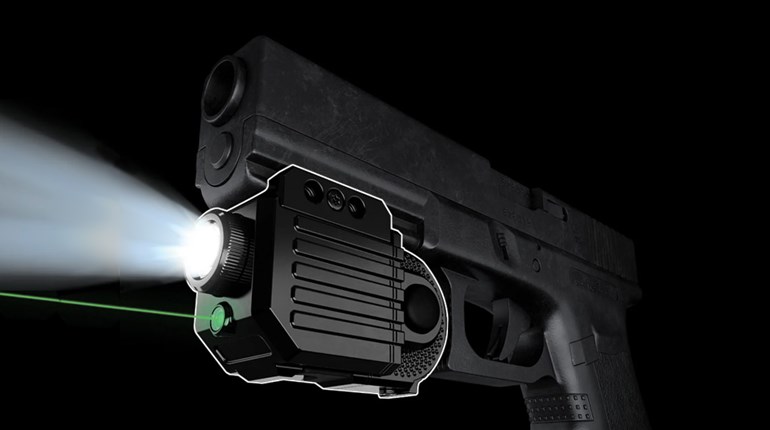From caribou, huge whitetails and moose to waterfowl in numbers that blacken the sky, Canada offers a wealth of hunting opportunities. The largest obstacle to accessing this hunting bonanza is crossing the border with a firearm.
However, if you plan ahead and have the necessary paperwork in hand, crossing the border shouldn’t be a problem. Starting the process a few weeks ahead can help alleviate any headaches.
To start, hunting with handguns is illegal in Canada. Carrying a handgun for protection is also illegal, so leave your sidearms at home.
There are also restrictions regarding magazine size on semi-automatic center-fire rifles. The maze of what guns are allowed and which aren’t is confusing at best. Magazines need to be plugged to hold no more than five shells. Basically, a Remington 7400, Browning BAR or similar guns are safe as long as the magazine is limited to five shots. With so called black guns, the situation is more complex and it’s best to ask about your gun before leaving home. Magazine restrictions don’t apply to lever-, pump- or bolt-action rifles.
A Paper Trail
To bring a gun into Canada for hunting, United States citizens have a few options. The first is to declare your guns to a customs officer when you enter Canada by using a Non-Resident Firearms Declaration. In addition, if more than three firearms are being imported, a Non-Resident Firearm Declaration Continuation Sheet must be filled out.
To save time, forms can be filled out prior to leaving home. However, be aware, the form should not be signed until you reach the border, as a customs officer must witness the signature.
A flat fee of $25 applies with a Non-Resident Firearm Declaration, no matter how many firearms are on it.
When the declaration is signed and checked by a customs officer, it is valid for 60 days. Renewal is free before the 60 days is reached by calling the Chief Firearms Office (1-800-731-4000) in the province or territory where you are hunting.
Option two is to apply for a five-year Possession and Acquisition License (PAL). To receive a PAL, the applicant must pass the Canadian Firearms Safety Course written and practical tests. Generally, this entails taking a course, but it might be possible to take the tests without the course. After passing the tests, a background check is completed; however, it can take several weeks to receive your PAL card.
The cost of the PAL is a $60 government fee. In addition, there are fees payable to the instructor for the course and test, which can vary.
If the hunter has a PAL, a Non-Resident Firearm Declaration doesn’t need to be filled out, but the firearms must be declared verbally at the border.
The third option is a Temporary Borrowing License. It’s used if the hunter doesn’t want to bring his or her own firearm, but would rather borrow one from an outfitter or Canadian resident with the proper licensing. A Non-Resident Firearms Declaration does not cover borrowing a gun. A borrowing license costs $30.
The recent demise of Canada’s long gun registry made the whole process of owning firearms easier for Canadians. As a result, non-residents with a Canadian firearms license (PAL) are not required to have individual registration certificates for each gun.
The Quebec government, however, challenged the federal government’s ability to destroy the registry data through the courts. While judges sort that out, Quebec residents are still required to register their guns. For non-residents, a Non-Resident Firearm Declaration is both their license and registration certificate.
Ammunition Chronicles
The good news is that unlike the ATF Form 6 Canadians must fill out to hunt in the United States, any of the three permits allows either ammunition purchases or importing limited amounts. Ammunition should still be reported to customs officers.
Air Entry
Travelling to Canada by air adds a new set of rules and fees for the travelling hunter. These rules and fees are specific to each airline. It is worth checking out Internet forums to see how firearm friendly a particular airline is. For instance, even when traveling in Canada, WestJet is known to be more hunter friendly than Air Canada.
In addition to airline rules, all the above licenses are needed.
Admission Requirements
Outside of carrying firearms, general admission requirements must be met for crossing the border. Generally, if a U.S. citizen has a criminal record, including a DUI conviction, it could be reason for denying admission.
A single DUI charge doesn’t mean the end of cross-border travel for life, though. “To overcome inadmissibility, criminally inadmissible individuals must obtain rehabilitation approval, have been pardoned or they may be eligible for a Temporary Resident Permit,” said Maja Graham of the Canadian Border Security Agency. “For individuals with a pardon, it is strongly recommended to have your pardon documentation on hand when presenting to the CBSA.”
Canada’s Tourism Facilitation Plan allows a one-time waiver of the $200 fee for a Temporary Resident Permit for offenses such as DUI. “Under this policy, visa and border services officers will continue to exercise their legally mandated discretion on a case-by-case basis. The final decision rests with the officers,” Graham said.
A passport or enhanced driver’s license is necessary for all visitors to Canada.
The Return Home
Hopefully, the return journey across the border will see the hunter with harvested game in tow. Regulations exist both in regards to taking wildlife out of Canada and into the United States.
Migratory bird hunters don’t need a permit to take lawfully harvested waterfowl if they return home within 30 days of harvesting the birds or five days after the close of the season.
Provincial regulations in some provinces require an export permit to cross the border with big game species such as moose, bear and deer. Consult the regulations for the jurisdiction that you plan to visit.
Check out U.S. import rules also. Polar bear hunters have faced headaches when attempting to take their trophies, which were legally harvested under Canadian law, back into the United States. Being well informed before leaving home can make your trip a much more enjoyable one.





































